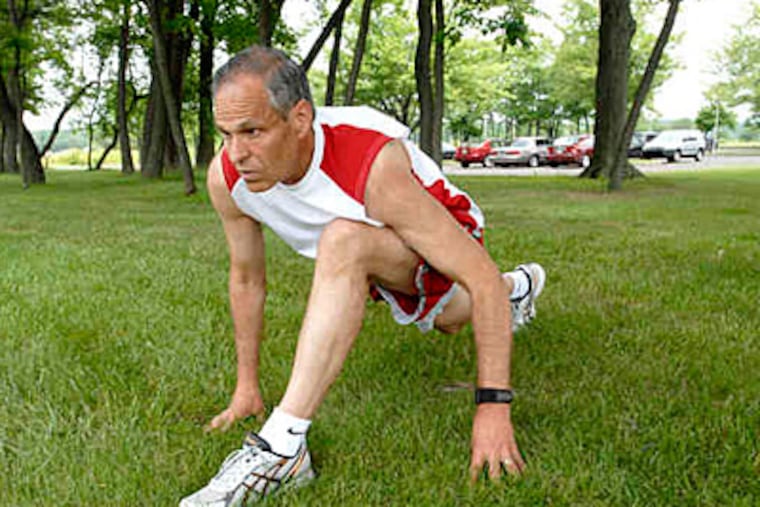Red yeast rice may lower cholesterol
Two years ago, Chuck Jones of Yardley had high cholesterol, but his medicine caused severe leg cramps that routinely ruined his sleep.

Two years ago, Chuck Jones of Yardley had high cholesterol, but his medicine caused severe leg cramps that routinely ruined his sleep.
Since participating in a clinical trial of red yeast rice, a supplement taken in China for centuries, Jones has gotten his cholesterol under control.
And within a week of starting the rice, "the pain was gone," the 59-year-old chemist said.
For Jones and most other "statin-intolerant" patients, red yeast rice combined with a heart-healthy diet and exercise helped lower bad "LDL" cholesterol, concludes a small study published today in the Annals of Internal Medicine.
Cholesterol is a fatlike substance that the body needs and makes. Too much can gum up the arteries and lead to heart disease, the nation's leading cause of death.
Many doctors routinely prescribe statins to lower cholesterol. Yet up to 10 percent of patients taking the drugs complain of muscle aches, memory problems, and other side effects.
That is a major issue given the large number of people treated with the drugs. Statins are the most prescribed medications in the country, with more than 200 million prescriptions filled last year alone, according to IMS Health, a company in Plymouth Meeting that tracks drug sales.
Local cardiologists David Becker and Ram Gordon, who led the study, believe in statins when diet and exercise fail to bring down a patient's cholesterol.
But the doctors also are open to supplements if their value and safety can be demonstrated. They don't want to risk the lives of patients who can't tolerate, or refuse to take, statins.
"In my practice, I see an enormous number of people who complain of muscle aches on statins," Becker said. "For many of those patients, red yeast rice, in conjunction with diet and exercise, works very well to lower their cholesterol."
Still, Becker warns patients to be wary of supplements, which are largely unregulated by the Food and Drug Administration. He also advises patients not to take red yeast rice without consulting a physician, because it can cause side effects similar to those of statins, including rare life-threatening problems.
Study participant Dee Little, 66, of Roxborough, experienced such problems with the red yeast rice and stopped taking it.
"I wasn't willing to put up with the body aches. I have enough of my own," she said. She was able to bring down her cholesterol levels with diet and exercise.
Red yeast rice, also called red rice yeast, is fermented rice. It contains compounds called monacolins, thought to act like low-dose statins by inhibiting the liver's production of cholesterol. One of those compounds is chemically identical to a statin.
The study involved a group of 31 randomly selected people taking red yeast rice and another group taking placebos. Both groups took part in a 12-week diet-and-exercise program.
The red yeast rice group lowered their bad, low-density lipoproteins, or LDL cholesterol, an average of 27.3 percent compared with 5.7 percent for the control group.
Two participants in the red yeast rice group dropped out with complaints of muscle aches, as did one person in the placebo group.
"I think most of the muscle pain is dose-related, and the main reason red yeast rice is better tolerated is that it is a low enough dose," said Daniel Rader, director of preventive cardiovascular medicine at the University of Pennsylvania and a coauthor of the red yeast rice study.
The red yeast rice used for the trial contained the equivalent of about six milligrams of lovastatin, a generic statin. Becker, however, rejects the notion raised by some experts that the supplement is simply a low-dose statin.
"It was a tiny, tiny amount of lovastatin," he said. "That would not lower cholesterol 27 percent." He said the various compounds in the red yeast rice might be interacting to amplify the cholesterol-lowering effect.
Experts said the problem of statin intolerance was going to get worse. Also in today's Annals of Internal Medicine, Canadian cardiologist Robert A. Hegele warns that the number of people experiencing statin side effects will grow as more receive high doses of the drugs to meet lower and lower cholesterol guidelines for preventing heart disease. He called for more research into the causes of the problem and to identify alternative approaches.
"For people who need to have their LDL lowered, it is important to try harder to find a treatment regimen that they could comply with or tolerate," Hegele said in an interview.
Red yeast rice, taken under a doctor's supervision to ensure regular testing for liver problems, could be an alternative strategy, Hegele said.
It also can be an expensive approach, costing consumers $15 to $30 for a month's supply, compared with $4 for a generic statin.
Paul S. Phillips, an interventional cardiologist at Scripps Mercy Hospital in San Diego, agreed that more research is needed to help patients with statin intolerance.
But he disagreed that red yeast rice is the answer. Because of the lack of supplement regulation, consumers can't be sure how much cholesterol-lowering power each pill packs or if any particular product contains toxins.
"These patients oftentimes feel that they have been harmed and ignored by conventional medicine," Phillips said.
So, he said, doctors need to do more to rebuild trust and win them over to conventional approaches.
The alternative is that patients "are likely to spend lots and lots of money on useless and potentially harmful supplements," Phillips said.
Becker used red yeast rice made by Sylvan Bioproducts Inc. of Kittanning, Pa., for the study. He also had the supplements tested by an independent laboratory for strength and purity.